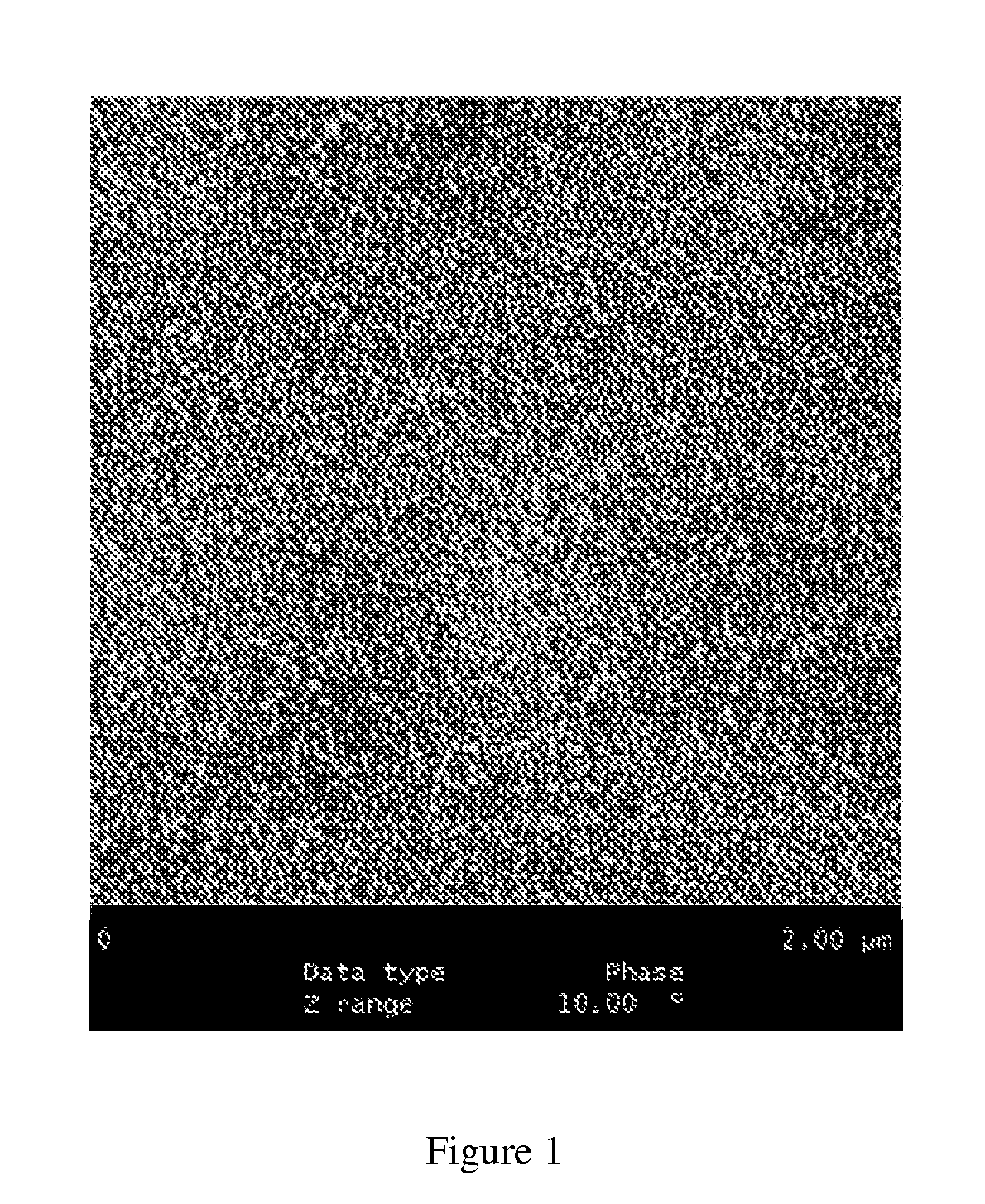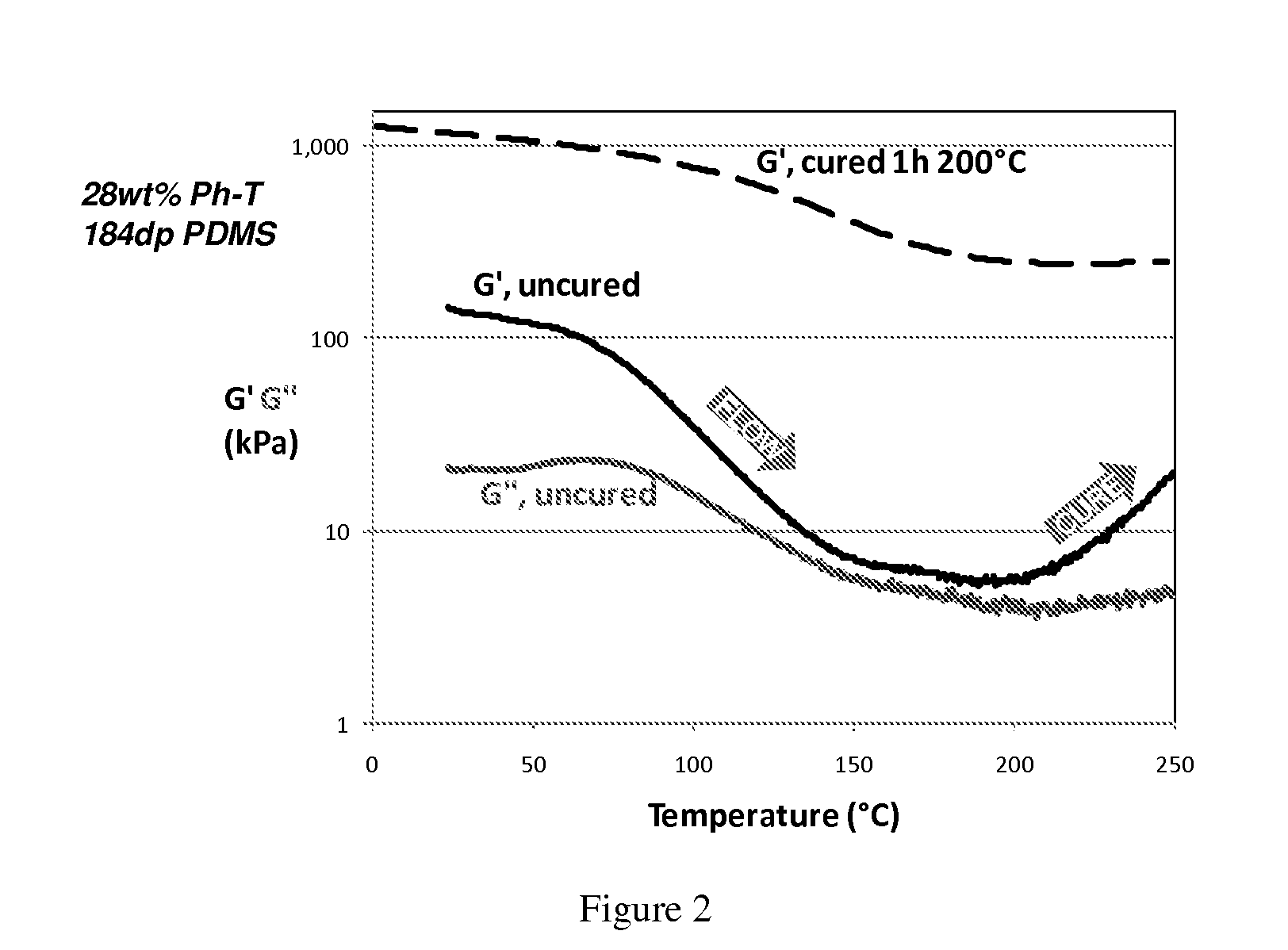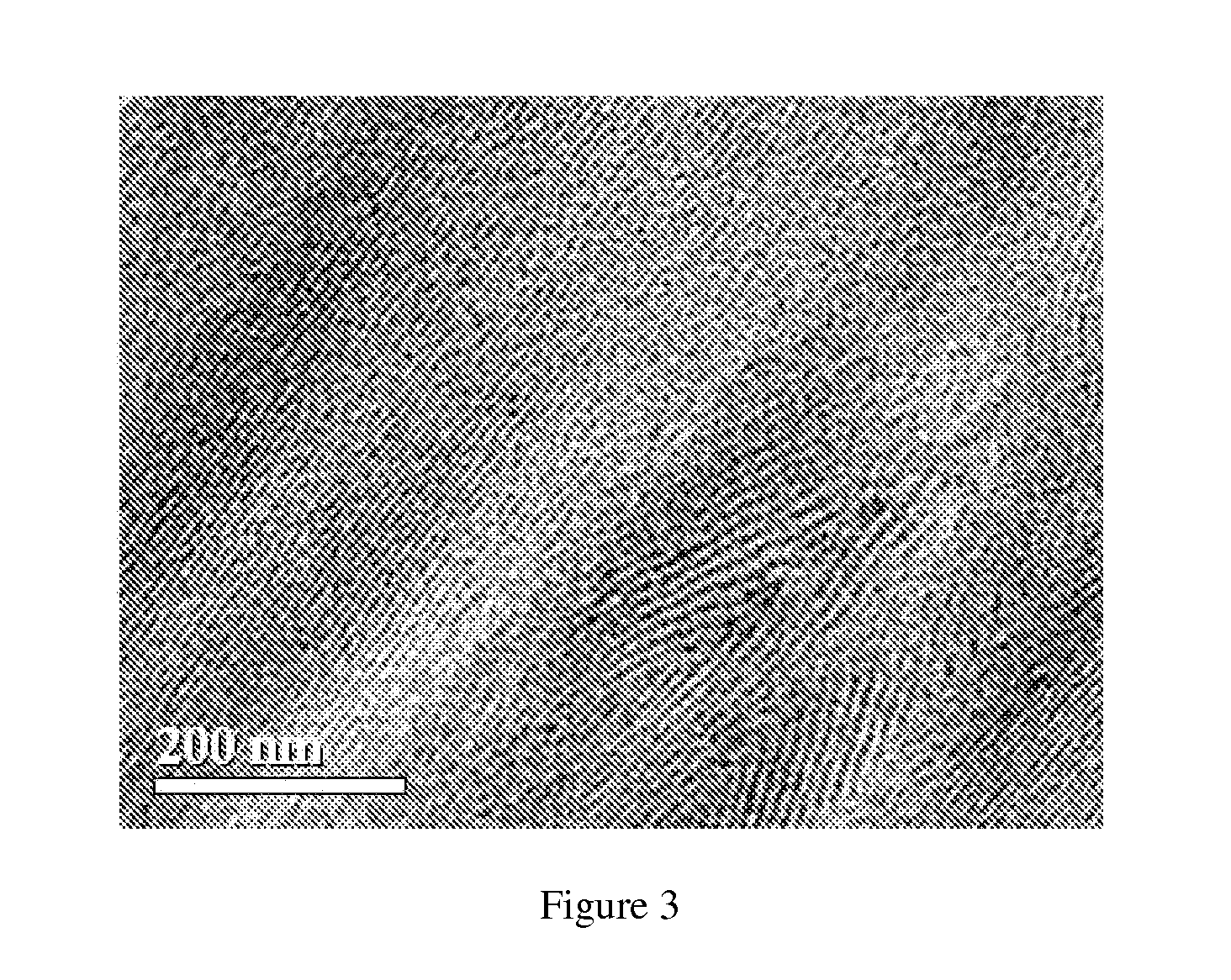Resin-linear organosiloxane block copolymers
a technology of organosiloxane block and copolymer, which is applied in the direction of solid-state device, semiconductor/solid-state device details, coatings, etc., can solve the problems of limiting the thermal stability and/or long-term durability of such coatings, and trace amounts of catalyst remaining in the final produ
- Summary
- Abstract
- Description
- Claims
- Application Information
AI Technical Summary
Benefits of technology
Problems solved by technology
Method used
Image
Examples
example 1
Reference
Oxime-Capping of Silanol Ended PDMS, Procedure for a 1.05 / 1 Ratio of MTO / SiOH
[0164]A solution of toluene (60.0 g) and 184 dp silanol terminated polydimethylsiloxane or PDMS (43.07 g, 0.580 mols Si, Dow Corning SFD 750) was capped with methyltris(methylethylketoxime)silane, MTO (2.0 g, 0.00663 mols, Gelest). It was prepared in a glove box (same day) under nitrogen by adding MTO to the silanol terminated PDMS and mixing at room temperature for 2 hours.
example 2
Reference
Acetoxy-Capping of Silanol Ended PDMS (1.05 / 1 Ratio of ETS900 / SiOH)
[0165]A solution of toluene (80.0 g) and 184 dp silanol terminated PDMS (Gelest DMS-S27, 43.2 g, 0.581 mols Si) was capped with alkyltriacetoxysilane (Dow Corning ETS-900, 4.54 g, 0.0195 mols Si). It was prepared in a glove box (same day) under nitrogen by adding the ETS-900 to the silanol terminated PDMS and mixing at room temperature for 2 hours.
example 3
Resin-Linear using Acetoxy Terminated PDMS based on 184 dp PDMS
Composition: (Me2SiO2 / 2)0.83 (PhSiO3 / 2)0.16 (28 wt % Phenyl-T)
[0166]A 5 L 4 neck round bottom flask was loaded with a phenylsilsesquioxane hydrolyzate (Dow Corning 217 Flake, 280.0 g, 2.050 mols Si) and toluene (Fisher Scientific, 1000.0 g). The flask was equipped with a thermometer, Teflon stir paddle, and a Dean Stark apparatus attached to a water-cooled condenser. A nitrogen blanket was applied. The Dean Stark was prefilled with toluene. An oil bath was used for heating. The reaction mixture was heated at reflux for 30 min. After cooling the reaction mixture to 108° C., a solution of diacetoxy terminated PDMS was added. The diacetoxy terminated PDMS was made according to example 2 using toluene (500.0 g), 184 dp silanol terminated PDMS (Gelest DMS-S27, 720.0 g, 9.690 mols Si), and 50 / 50 distilled MTA / ETA (23.77 g, 0.1028 mols Si). The diacetoxy terminated PDMS was added quickly to the phenylsilsesquioxane hydrolyzate ...
PUM
| Property | Measurement | Unit |
|---|---|---|
| weight % | aaaaa | aaaaa |
| weight % | aaaaa | aaaaa |
| loss modulus | aaaaa | aaaaa |
Abstract
Description
Claims
Application Information
 Login to View More
Login to View More - R&D
- Intellectual Property
- Life Sciences
- Materials
- Tech Scout
- Unparalleled Data Quality
- Higher Quality Content
- 60% Fewer Hallucinations
Browse by: Latest US Patents, China's latest patents, Technical Efficacy Thesaurus, Application Domain, Technology Topic, Popular Technical Reports.
© 2025 PatSnap. All rights reserved.Legal|Privacy policy|Modern Slavery Act Transparency Statement|Sitemap|About US| Contact US: help@patsnap.com



